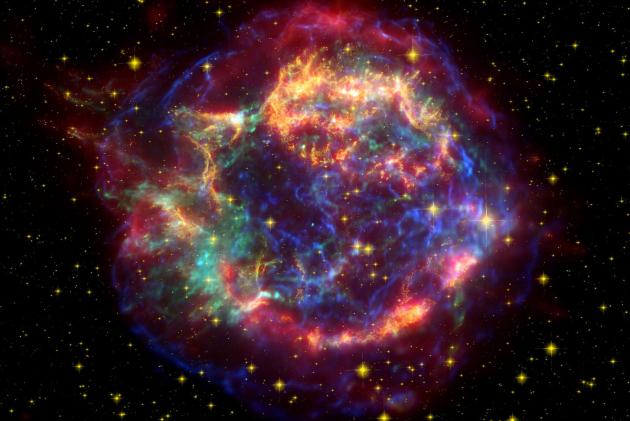Hubble Telescope Turns 25
[hdplay id=188 width=710 height=490]
WASHINGTON, April 24 (UPI) — Twenty-five years ago today, April 24, 1990, NASA’s Hubble Space Telescope — the world’s preeminent orbital observatory — was launched into low Earth orbit. For last quarter-century, it’s been capturing stunning images of deep space and the celestial bodies that populate it.
Hubble’s construction began in the 1970s. It’s launch was originally slated for 1983, but its completion was delayed nearly a decade by technical challenges and budget issues. But the massive mirrored telescope, orbiting just 100 miles beyond the International Space Station, quickly proved it was worth the wait.
“Hubble has completely transformed our view of the universe, revealing the true beauty and richness of the cosmos,” John Grunsfeld, astronaut and associate administrator of NASA’s Science Mission Directorate, said in a press release. “This vista of starry fireworks and glowing gas is a fitting image for our celebration of 25 years of amazing Hubble science.”
A series of upgrades over the years has resulted in an increasingly impressive resolution, delivering remarkable photos of faraway galaxies, nebulas and supernovas.
 More than just provide pretty pictures, Hubble’s observations advanced the work of astronomers in understanding the vast universe. Its data helped scientists estimate the universe’s age more accurately. Its observations also led to the realization that the universe is still expanding. Its imagery allowed researchers to better understand the relationship between galaxies and massive black holes.
More than just provide pretty pictures, Hubble’s observations advanced the work of astronomers in understanding the vast universe. Its data helped scientists estimate the universe’s age more accurately. Its observations also led to the realization that the universe is still expanding. Its imagery allowed researchers to better understand the relationship between galaxies and massive black holes.
And the the world’s most famous telescope isn’t done. NASA officials suggest its scientific life will continue well into the next decade. But all good things must come to an end; the telescope will have to be replaced eventually. Sometime between 2030 and 2040, a combination of atmospheric drag and solar activity will push and pull back into Earth’s atmosphere.





